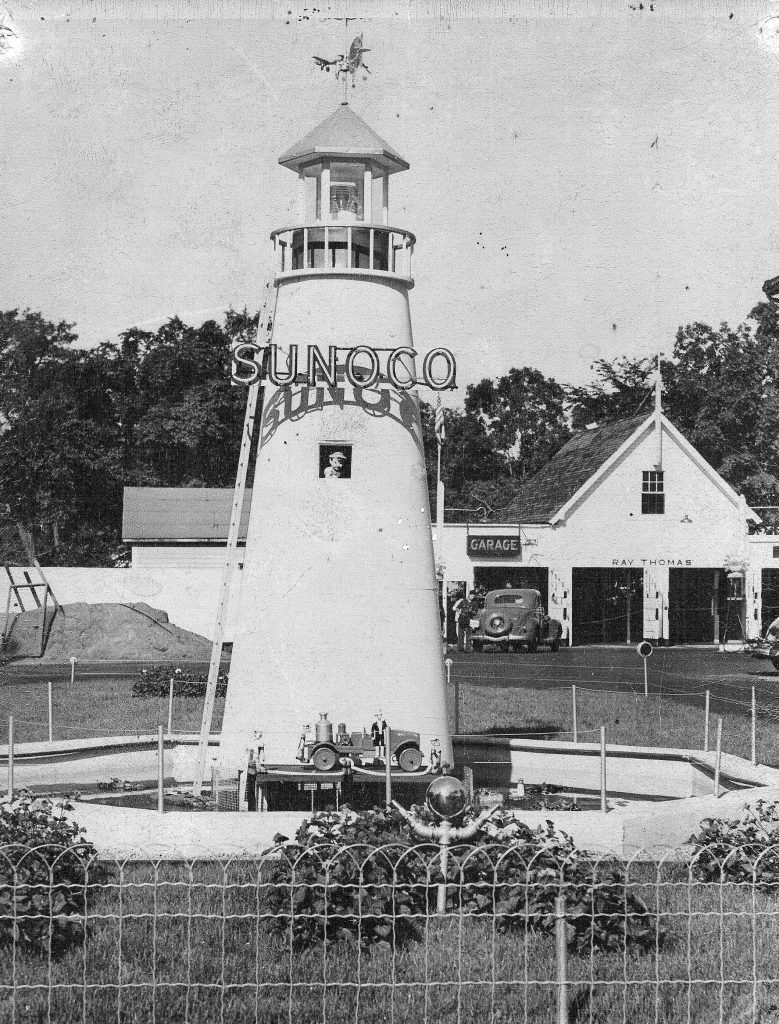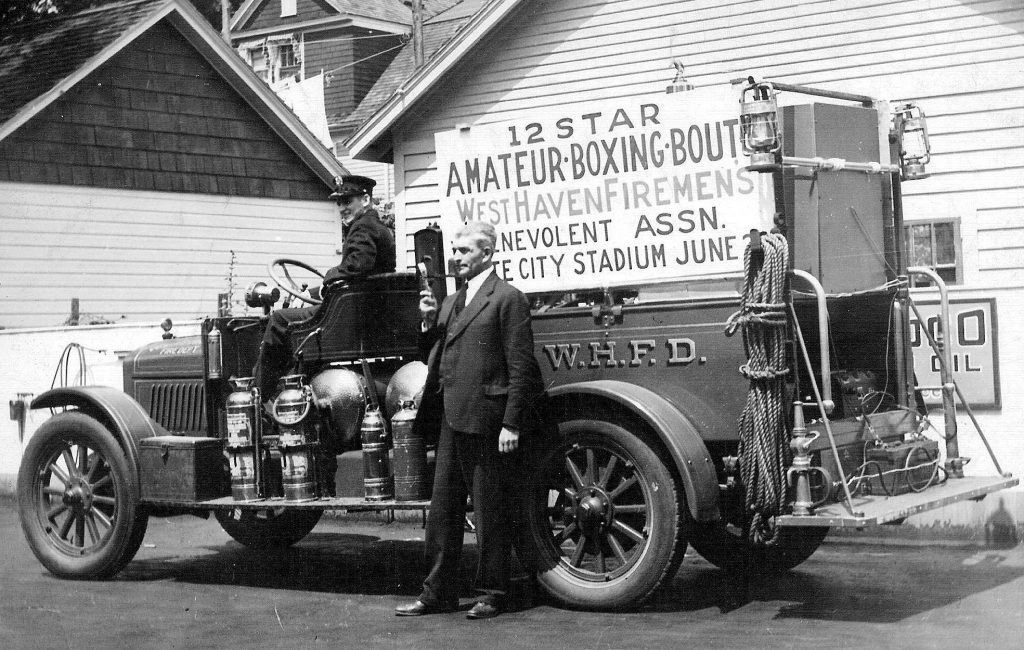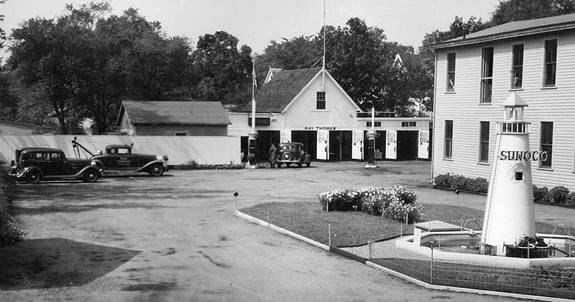


Thomas’ Garage
Part I
See part 2
The year was 1912, and automobiles were rapidly changing the face of America. In that year, 78,000 Fords were built, along with 3000 Chevrolets. Total U.S. automobile production was less than 200,000 units. Gasoline was available then for just pennies per gallon, which was a good thing, since the average American salary was but $1000 per year. And it was also in that year—1912–that the number of automobiles on the streets of New York City began to exceed the number of horses.
Raymond W. Thomas recognized a business opportunity, and in 1912 he opened Ever-Ready Service Center on Washington Avenue, between George Street and Elm Street. The nearest neighboring businesses were Pfaff’s Market to the south on Elm Street, and to the north, the Church Press, which was owned by his brother Nathan Thomas.
At the center of this new opportunity was the constant need for fuel: Ray Thomas immediately set to work selling gasoline, towing disabled autos and servicing and repairing them. He had a genius for innovation, and in a time when auto batteries were not very reliable, he developed a multi-car charging system that utilized overhead “trolley wires” to distribute the needed electrical power. As an extension of this business, Ray began recharging radio batteries; for the large cabinet radios of the day were not plugged into wall outlets, rather they required bulky wet cell batteries for their operation. In addition, Ray Thomas realized that by clustering all of his diagnostic gauges onto one backboard, he could simplify the diagnostic process, and increase efficiency and profitability; his system of gauge clustering was observed and eventually duplicated by a large automotive gauge manufacturer.
It is said that there is a thin line between genius and eccentricity, and Ray Thomas straddled that line with great abandon. In the front yard of the service station, there was a seven foot tall model lighthouse and a model fire engine, surrounded by a moat that was filled with goldfish. That lighthouse stood for many years during the 1930s, before being vandalized and removed. One day, Ray Thomas decided to build a racing boat in the attic above the garage. When the boat was completed, he realized that he had never considered how to get it out of the attic; ultimately, he was forced to cut an exit hole in the upstairs garage wall, as this was the only way that the boat would ever be removed and put into the water!
Ray Thomas saw automotive repair through its infancy and into its maturity; meanwhile his son Edwin worked as a linotype operator next door at The Church Press, which was owned by Ray’s brother Nathan Thomas. At the outbreak of World War II, Edwin joined the U.S. Armed Forces, and left West Haven for the duration.
During the war years, Ed Thomas became a dental technician, and worked at a hospital in southern California, at a base named Camp Anza. It was there that he met a California girl named Barbara Eisenlord. She was a secretary for the base at the time. Ed Thomas whistled at Barbara; and apparently, she liked the note that she heard. They dated until the war was over, and each returned to their respective homes: she in California, he in Connecticut. Ed could not stop talking about Barbara, so Ray Thomas bought her a round trip train ticket to New Haven, so that they could spend the 1946 Christmas holidays together. Later, she cashed in the return train ticket, and they were married in January of 1947.
By this time, Ed Thomas had joined his father in the family business, but he would always say that he wished he had become a dentist.